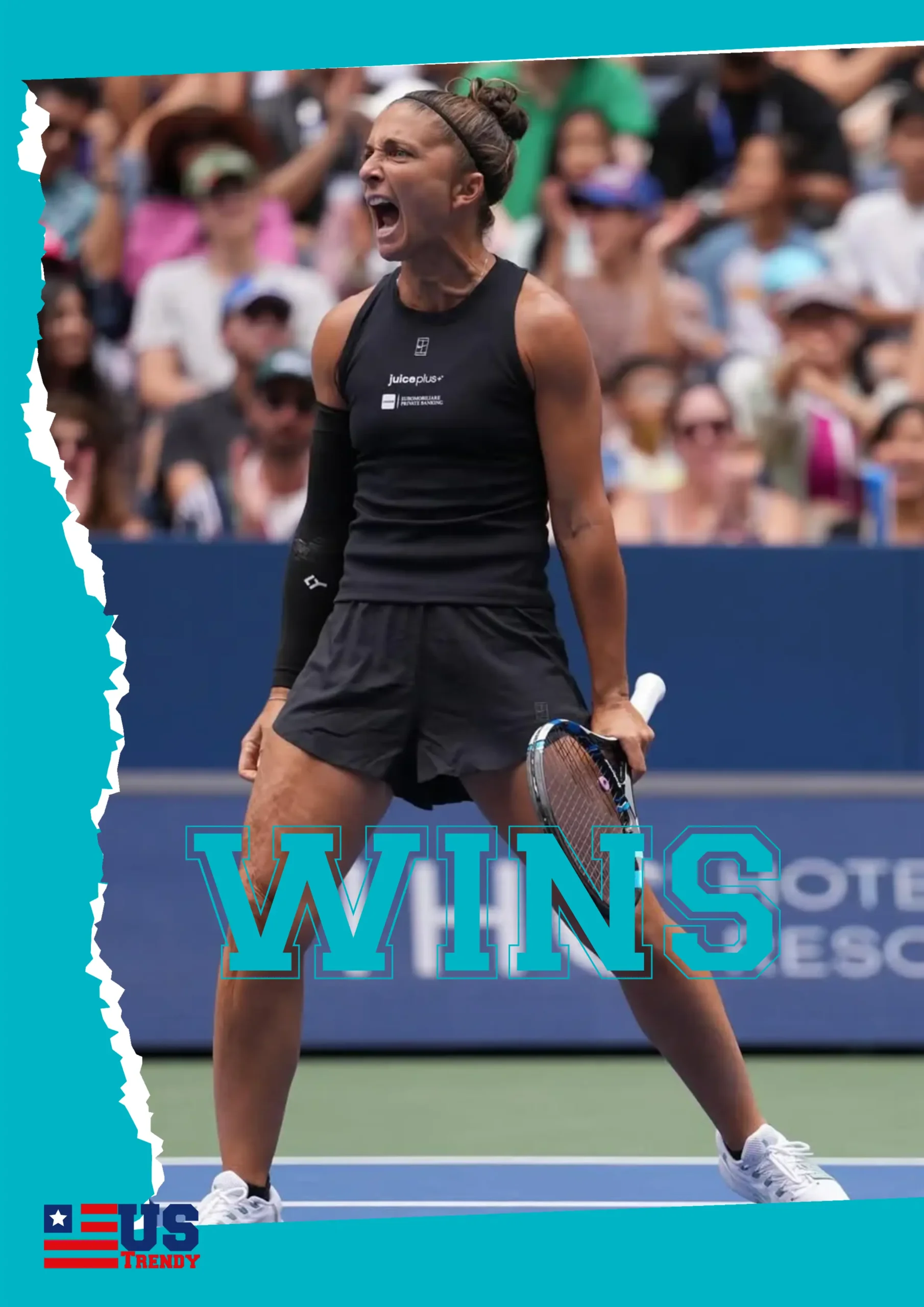Doubles wizardry wins the night: Sara Errani and Andrea Vavassori outlast Iga Świątek & Casper Ruud to defend the revamped US Open mixed doubles title, as Jessica Pegula’s run ends and the new format sparks debate. Here’s what happened, why it matters, and what’s next for Errani.
Snapshot: the latest on Sara Errani
Sara Errani and fellow Italian Andrea Vavassori have defended their US Open mixed doubles title, beating Iga Świątek and Casper Ruud in a 10-point match tiebreak on Wednesday night in New York. The victory came in a “reimagined” two-day mixed doubles event with no-ad scoring and quick sets designed to spotlight marquee singles stars — yet the trophy stayed with the true doubles specialists.
The bracket that set the stage: Errani/Vavassori advanced past Danielle Collins/Christian Harrison in the semifinals, while Świątek/Ruud eliminated Jessica Pegula/Jack Draper after Pegula’s pair had earlier knocked out Carlos Alcaraz/Emma Raducanu in a buzz-worthy opening round.
Headline result & why it resonates
- Final: Errani/Vavassori def. Świątek/Ruud 6–3, 5–7, [10–6]. The Italians steadied late after the singles stars forced a deciding breaker, underscoring how doubles instincts and patterns can trump raw power when margins tighten.
- Context: Organizers condensed mixed doubles into a prime-time, star-driven showcase with a record purse reportedly hitting $1 million to the champions — a bid to bring more eyes and urgency to the discipline. Even in that environment, Errani’s craft and Vavassori’s serve-volleying held firm.
- Symbolism: Guardian and ABC reporting framed the win as a small triumph for doubles purists amid a format engineered for household-name singles players. Errani/Vavassori’s back-to-back titles delivered the message themselves.
The road to the title (and the viral subplot)
The mixed doubles draw became social-media catnip on day one when Pegula/Draper eliminated Raducanu/Alcaraz, then upset Andreeva/Medvedev to reach the final four. The spectacle fueled primetime interest before Świątek/Ruud halted their run. One tabloid even caught Pegula mouthing an expletive in the tense finish.
On the other side, Collins/Harrison — late entrants after a withdrawal — surged into the semis but were cooled off by the defending champs, 4–2, 4–2, under the abbreviated scoring. Errani/Vavassori, who navigated a leg issue for Errani during the final, still found the late-match poise to close.
[Note: Images are collected from Instagram]
What this means for Sara Errani
1) Her doubles legacy adds another chapter
Errani has long been renowned for court craft — angles, lobs, and disruptive variety — that age gracefully in doubles. Retaining a major mixed title in a field packed with elite baseliners strengthens that legacy and keeps her relevant in the back half of her career. The ATP Tour report emphasized how the Italians won both semifinal and final on the same evening, highlighting endurance and pattern discipline.
2) Proof of concept: specialists still matter
The format innovations (short sets, no-ad, immediate final) were built to spotlight stars such as Świątek, Ruud and Pegula, but Wednesday showed that synergy beats star power when decision-points arrive at the net. Both the AP and Guardian pieces framed their triumph as a defense of doubles expertise within a TV-friendly experiment.
3) A platform for more 2025 titles
With New York momentum, watch for Errani to parlay this into WTA doubles results during the fall swing. While mixed doubles doesn’t award ranking points, the confidence and spotlight do carry over — especially important as partners juggle schedules and fatigue post-US Open.
The format: love it or leave it?
The new, condensed mixed doubles drew bigger crowds, clearer TV windows, and a prize purse jump — but also sparked debate:
- Pros: More star cameos; easier to follow in prime time; energetic match-tiebreak finishes.
- Cons: Purists dislike the compressed scoring and reduced tactical build-up. Yet, ironically, it gave doubles specialists like Errani/Vavassori a stage to prove their value in crunch time.
View this post on Instagram
Where Pegula, Ruud & Co. fit into the story
- Jessica Pegula: The American No. 1 played a starring role in the event’s visibility, pairing with Britain’s Jack Draper for marquee wins before bowing out to Świątek/Ruud. Her run and reactions kept the tournament in headlines through day two.
- Casper Ruud: A clay-to-hard court stalwart in singles, Ruud’s crisp returns and reliable first-strike forehand translated nicely to mixed doubles. He and Świątek produced late drama but couldn’t unseat the Italians in the breaker.
- Andrea Vavassori: The quintessential serve-and-volleyer — his first-ball positioning and closing angles free Errani to orchestrate from the baseline and mid-court, a partnership formula that continues to scale, even under abbreviated scoring.
Backgrounder: Sara Errani in brief
A former Roland Garros singles finalist and long-time doubles ace, Errani reinvented her late-career trajectory by doubling down on tactical precision, returns at the feet, and elite touch. Her partnership with Vavassori revives a classic Italian doubles identity: front-foot netting with guile behind it. Wednesday’s successful title defense shows that even amid format disruption, the fundament of doubles still wins — the poach, the lob, the short-angled dipper at 9–6 in the breaker.
What’s next — and what to watch for
- Scheduling & health: Reports noted Errani needed on-court treatment during the final; how she manages recovery will shape her fall doubles slate.
- Mixed doubles’ future: If the two-day showcase with million-dollar stakes becomes the US Open template, expect even deeper singles fields next year — and an ongoing specialists vs. superstars narrative in which Errani will again be central.
- Storylines to monitor: Pegula’s post-Open form, the singles campaigns of Świątek and Ruud, and whether other Slams flirt with made-for-TV formats inspired by New York’s experiment.





